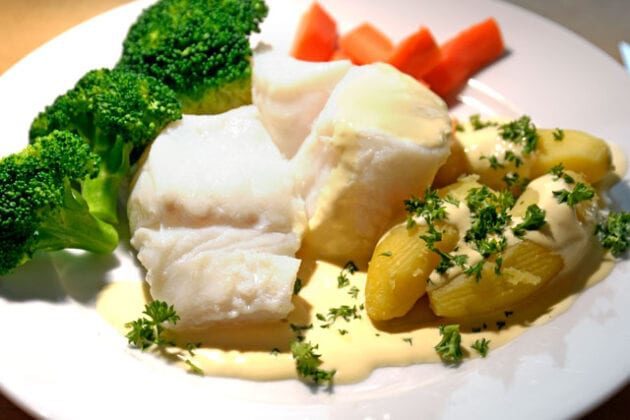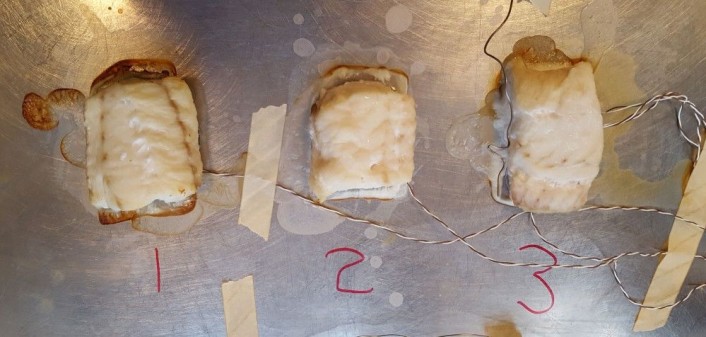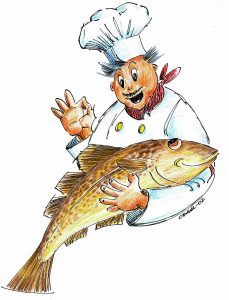Why the fish shrinks when it’s baked

The large, juicy piece of cod in the ovenproof dish kept growing smaller. Some of its juices had run out, but had now evaporated, and you could see the rectangular imprint around the fish showing how big it was when you put it in the oven.
What happens when a piece of fish shrinks during cooking? And is it possible to calculate how much liquid it loses when it is cooked briefly or for a longer time at different temperatures?
Most people do not dwell very long on this question when they cook fish or meat dishes, but rather focus on what they need to do to avoid being left with a tough and leathery piece of steak or a dry and shrivelled piece of fish. On cooking blogs, people often discuss the ideal oven temperature and core temperature, whether the meat or fish should be salted before or after frying or cooking it, and how long to let the dish – such as a roast – rest before you start cutting into it.
Nofima scientist Dagbjørn Skipnes is an expert in the field, and has a PhD in optimising the heat treatment of cod. He has supervised masters degree students who have looked at quality changes during heat treatment of cod, and currently supervises a PhD student working on a simulation of the entire process.
And so we ask him: Why does the fish shrink when it is baked?
Three simple mechanisms
During heating, any porous body containing water will release water to its environment, explains Skipnes.
“Imagine a sponge that retains its shape even when it is completely dried out. At increasing temperatures up to boiling point, the water will expand and gradually evaporate,” he says.
When heating pieces of fish, three simple mechanisms are key:
- The temperature difference between the surface and the core of the cod causes the water in the fish to develop different densities. When the temperature increases, the water expands, especially when it evaporates.
- When the increased temperature causes the water to expand, it creates pressure inside the fish, which drives the liquid out to the surface.
- The surface is the first to dry out. It will then draw water out from the core of the fish piece.
With knowledge about these three mechanisms it is possible to calculate how much liquid will be lost with different combinations of time and temperature.

What happens in the cod as it shrinks?
“Now imagine a blackboard sponge of the kind you remember from school, which shrinks as it dries out. That happens when the water isn’t just held inside the large holes inside the sponge, but is also absorbed by the sponge’s material. And that’s the way it is with fish”, explains Skipnes.
The fluid loss leads to shrinkage, while at the same time shrinkage leads to fluid loss; an interplay between the release of fluids and shrinkage.
“Even though there have been several studies on how water is retained in fish, many questions are still unresolved”, the scientist says.
To get closer to finding an answer, scientists around the world have studied how different proteins are altered during heat treatment – or cooking.
“The combination of time and temperature needs to reach a certain level for the proteins to change. A short time at a high temperature can have the same effect as a long time at a relatively lower temperature. Performing measurements of many different combinations of time and temperature, called kinetic studies, is time-consuming”, he says.
However, what we do know is that the fish will shrink because of how the heat affects the proteins, and that fluid loss also causes shrinkage.
How to cook a juicy cod dish

- Preheat the oven to 160°C. You could use a lower temperature if you want juicier fish, or a higher temperature for a crisper surface.
- Make brine from one litre of water mixed with 45 grams of salt.
- Divide the cod fillet into equal-sized pieces and put them into the brine. Let the fish soak for around ten minutes.
- Bake the fish in an oven-proof dish for 12–15 minutes, and use an oven thermometer to keep an eye on the core temperature. While most people prefer a core temperature of around 60°C, many chefs prefer a slightly lower temperature such as 55°C.
- We recommend serving the dish with almond potato puree and Sandefjordsmør – butter & cream sauce; that’s Dagbjørn’s favourite.
This article was first published on Nofima’s seafood blog on Forskning.no in November 2017
Contact person
Research areas
Capture fisheries
Topics
Seafood
